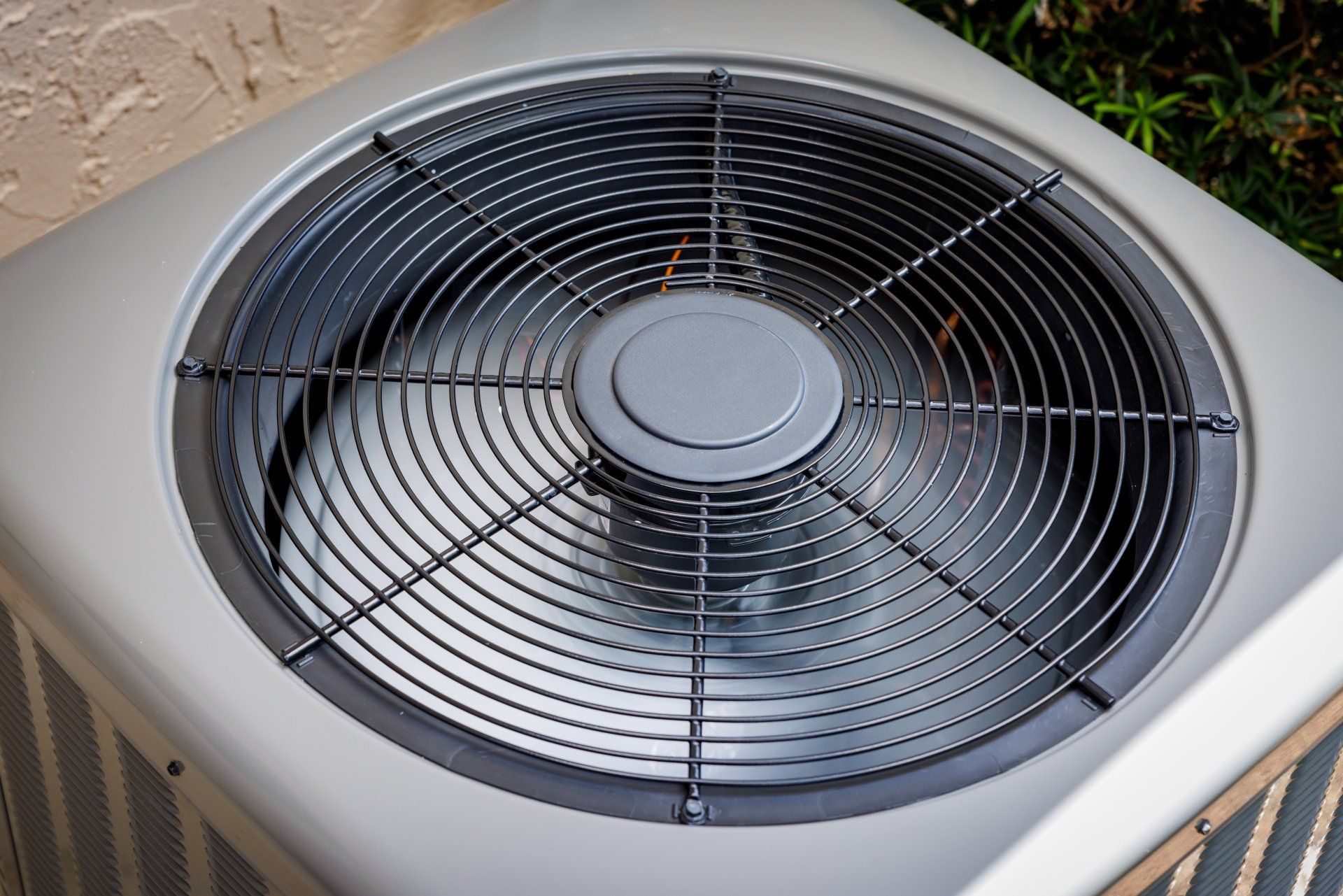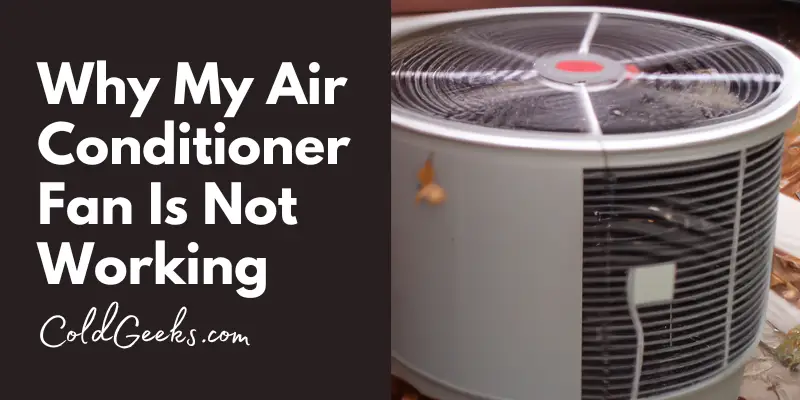Why Is The Fan Not Turning On My Ac Unit

The air conditioning system is a marvel of modern engineering, providing cool relief during sweltering summer months. However, a common issue homeowners, HVAC technicians, and facility managers face is the dreaded scenario of the AC unit turning on, but the fan remaining stubbornly still. This seemingly simple problem can stem from a variety of causes, ranging from minor fixes to more complex component failures. Understanding these potential causes and how to diagnose them is crucial for efficient troubleshooting and maintaining a comfortable indoor environment. This article will delve into the reasons why your AC unit's fan might not be spinning, providing insights for homeowners, guidance for HVAC technicians, and strategies for property managers.
Common Causes: A Homeowner's Perspective
For homeowners, a non-spinning AC fan can be a frustrating experience. Before calling a technician, it's worth investigating a few common and easily resolvable issues:
1. Power Issues
The most basic check is to ensure the unit is receiving power. Verify that the circuit breaker for the AC unit hasn't tripped. Look for the breaker labeled "AC," "Air Conditioner," or the outdoor unit number in your electrical panel. If it's tripped, reset it. If it trips again immediately, it indicates a more serious electrical problem requiring professional attention.
2. Thermostat Settings
Ensure the thermostat is set to "Cool" and the fan setting is on "Auto" or "On." In "Auto" mode, the fan will only run when the compressor is active. If the thermostat is set too high, or the ambient temperature is already below the set point, the compressor (and fan) may not engage. Set the thermostat a few degrees lower than the current room temperature and observe if the fan starts.
3. Condenser Unit Obstruction
The outdoor condenser unit needs adequate airflow to function correctly. Check for any obstructions around the unit, such as leaves, branches, or debris. Clear away any visible blockages to ensure proper ventilation. A buildup of debris can also impact the efficiency of the condenser coil, causing the system to work harder and potentially overheat.
4. Frozen Evaporator Coil
A frozen evaporator coil, located inside the indoor air handler, can restrict airflow and prevent the fan from operating. This is often caused by low refrigerant levels or a dirty air filter. If you suspect a frozen coil, turn off the AC system and allow it to thaw for several hours. Replace the air filter to improve airflow. If the problem persists after thawing and filter replacement, it's likely a refrigerant issue requiring professional repair.
Technical Troubleshooting: An HVAC Technician's Guide
HVAC technicians need a systematic approach to diagnose a non-spinning AC fan. Here’s a breakdown of common technical issues and diagnostic steps:
1. Capacitor Failure
The capacitor provides the initial jolt of electricity needed to start the fan motor. A faulty capacitor is one of the most common reasons for fan motor failure. Use a multimeter to test the capacitor's microfarad (µF) rating. Compare the reading to the capacitor's stated value. A significant deviation indicates the capacitor needs replacement. Note: Always discharge the capacitor before handling it to avoid electrical shock. A typical capacitor for an AC unit costs between $20-$100, making it a relatively inexpensive repair.
2. Fan Motor Issues
The fan motor itself may be faulty. Check the motor windings for continuity using a multimeter. An open winding indicates a failed motor. Also, inspect the motor bearings for excessive wear or binding. Sometimes, lubricating the bearings can temporarily resolve the issue, but a complete motor replacement is often necessary. Fan motor replacement costs vary depending on the type and size, typically ranging from $200 to $800.
3. Contactor Problems
The contactor is an electrical switch that controls power to the condenser unit. If the contactor is faulty, it may not be sending power to the fan motor. Use a multimeter to check for voltage at the contactor terminals when the thermostat is calling for cooling. A lack of voltage indicates a contactor issue. Replacement costs for contactors typically fall between $50 and $200.
4. Wiring Issues
Inspect the wiring connections to the fan motor, capacitor, and contactor. Look for loose connections, corrosion, or damaged wires. Use a wiring diagram to ensure all connections are correct. Repair or replace any damaged wiring as needed. A loose or corroded wire can cause a high resistance connection, preventing the fan motor from receiving adequate power.
5. Control Board Malfunction
In modern AC units, the control board manages various functions, including fan operation. A faulty control board can prevent the fan from turning on, even if other components are working correctly. Diagnosing a control board issue often requires advanced troubleshooting skills and specialized equipment. Replacement costs for control boards can range from $300 to $1000, depending on the unit's complexity.
Proactive Maintenance: A Facility Manager's Strategy
For facility managers responsible for maintaining HVAC systems in large buildings, preventative maintenance is key to avoiding costly repairs and ensuring occupant comfort. Here are some proactive strategies:
1. Regular Inspections
Schedule regular inspections of all AC units, including checking fan motor operation, capacitor health, and wiring connections. Implement a checklist to ensure consistent inspection procedures. Document all findings and track any recurring issues.
2. Cleaning and Maintenance
Regularly clean the condenser coils to ensure optimal heat transfer. Remove any debris that may be obstructing airflow. Clean or replace air filters regularly to maintain proper airflow and prevent evaporator coil freezing. Clean coils improve the SEER (Seasonal Energy Efficiency Ratio) rating as well.
3. Capacitor Testing
Proactively test capacitors annually to identify weak components before they fail. Replacing capacitors before they fail can prevent more significant damage to the fan motor or compressor.
4. Motor Lubrication
Lubricate fan motor bearings regularly, if applicable. Some motors are sealed and do not require lubrication, but others benefit from occasional oiling to reduce friction and extend motor life.
5. Contractor Agreements
Establish service agreements with qualified HVAC contractors to provide ongoing maintenance and repairs. Clearly define the scope of work, response times, and pricing in the agreement.
Cost, Efficiency, and Lifespan Considerations
Understanding the cost implications of different repairs, the efficiency ratings of replacement components, and the expected lifespan of HVAC equipment is crucial for informed decision-making. For example, replacing a failed fan motor with a high-efficiency electronically commutated motor (ECM) can improve overall system efficiency and reduce energy consumption. While ECM motors are more expensive upfront, their energy savings can offset the initial cost over time. The typical lifespan of an AC unit is 15-20 years, but proper maintenance can extend its life. Regular maintenance, such as coil cleaning and filter replacement, can improve the EER (Energy Efficiency Ratio) of the unit and postpone the need for complete system replacement. Consider the long-term cost benefits of investing in high-efficiency components and proactive maintenance when making decisions about HVAC system repairs and replacements.










